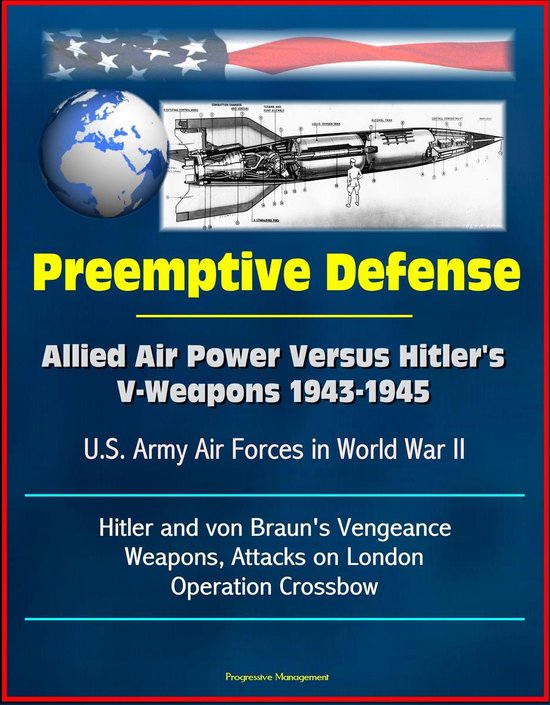
Preemptive Defense: Allied Air Power Versus Hitler's V-Weapons 1943-1945 - U.S. Army Air Forces in World War II, V-2, Hitler and von Braun's Vengeance Weapons, Attacks on London, Operation Crossbow
Professionally converted for accurate flowing-text e-book format reproduction, this Air Force publication recounts the efforts to destroy Hitler's Vengeance weapons during World War II.
In 1943, the Allies knew that Germany was developing Vergeltungswaffe (vengeance) or "V" weapons that threatened to reverse the course of World War II. But the Allies did not know exactly what the weapons were or how to defend against them. Eventually, Allied intelligence and aerial reconnaissance identified two separate programs - a pilotless aircraft bomb (V-1) and a ballistic missile bomb (V-2) - that endangered London and other sites in southern England. The Allies decided that the best defense was preemptive strikes against any targets identified with the V-weapons programs, including launch sites and supply depots. Allied leaders disagreed on how much and what kind of air power should be diverted to the strikes, and on how long such strikes should continue. Germany withheld launching V-1s until after D-Day and did not launch V-2s until September 1944. With Allied ground forces having returned to Western Europe in strength, the German bombardment of London and other European cities proved to be too little and too late to affect the outcome of the war.
The Allied invasion of France on June 6, 1944, signaled the certain end to Adolf Hitler's Third Reich. Six days later, a German pilotless aircraft bomb - designated as the V-1—flew across the English Channel and dropped on central London. That these two events happened in that order within the same week was no coincidence: starting in December 1943, the Allies had diverted a substantial portion of their total war effort to ensure that whatever threat Hitler's V-weapons posed to the Allies would be delayed until after the invasion.
Allied intelligence had revealed in late 1942 the existence of two new German weapons. One was a flying torpedo, a jet-powered aircraft launched from a ground-based catapult or from another aircraft. It flew at roughly 360 mph with a range of about 150 miles. The torpedo could deliver 1,870 pounds of high explosive. Today we call this weapon a "cruise missile," ground-, air-, or sea-launched.
| Auteur | | Progressive Management |
| Taal | | Engels |
| Type | | E-book |
| Categorie | | Geschiedenis |